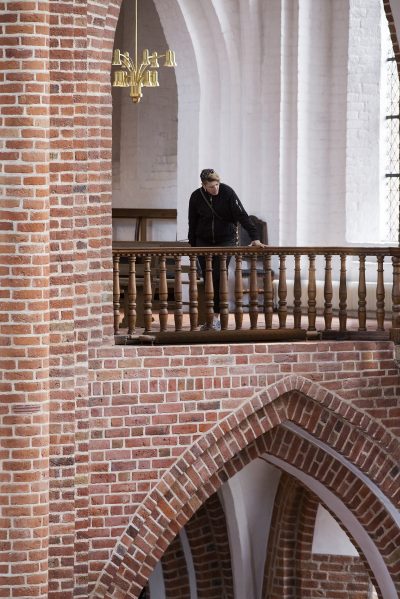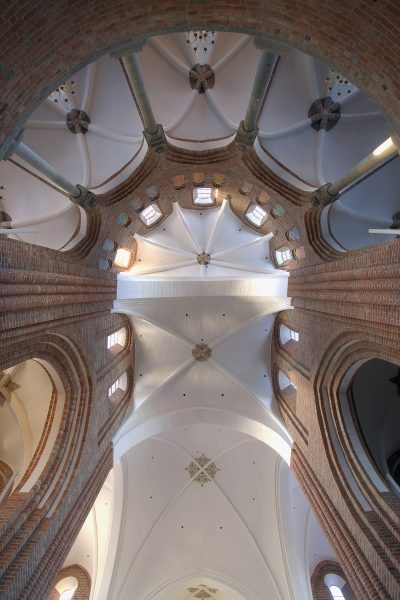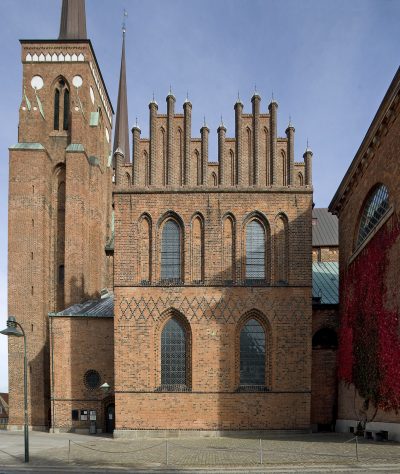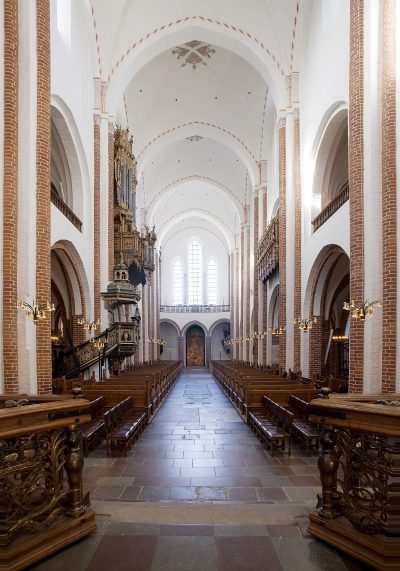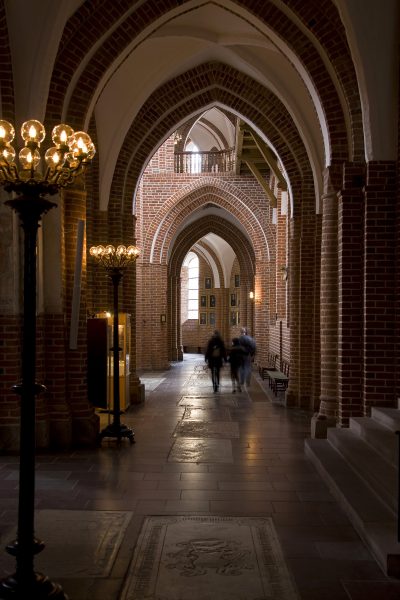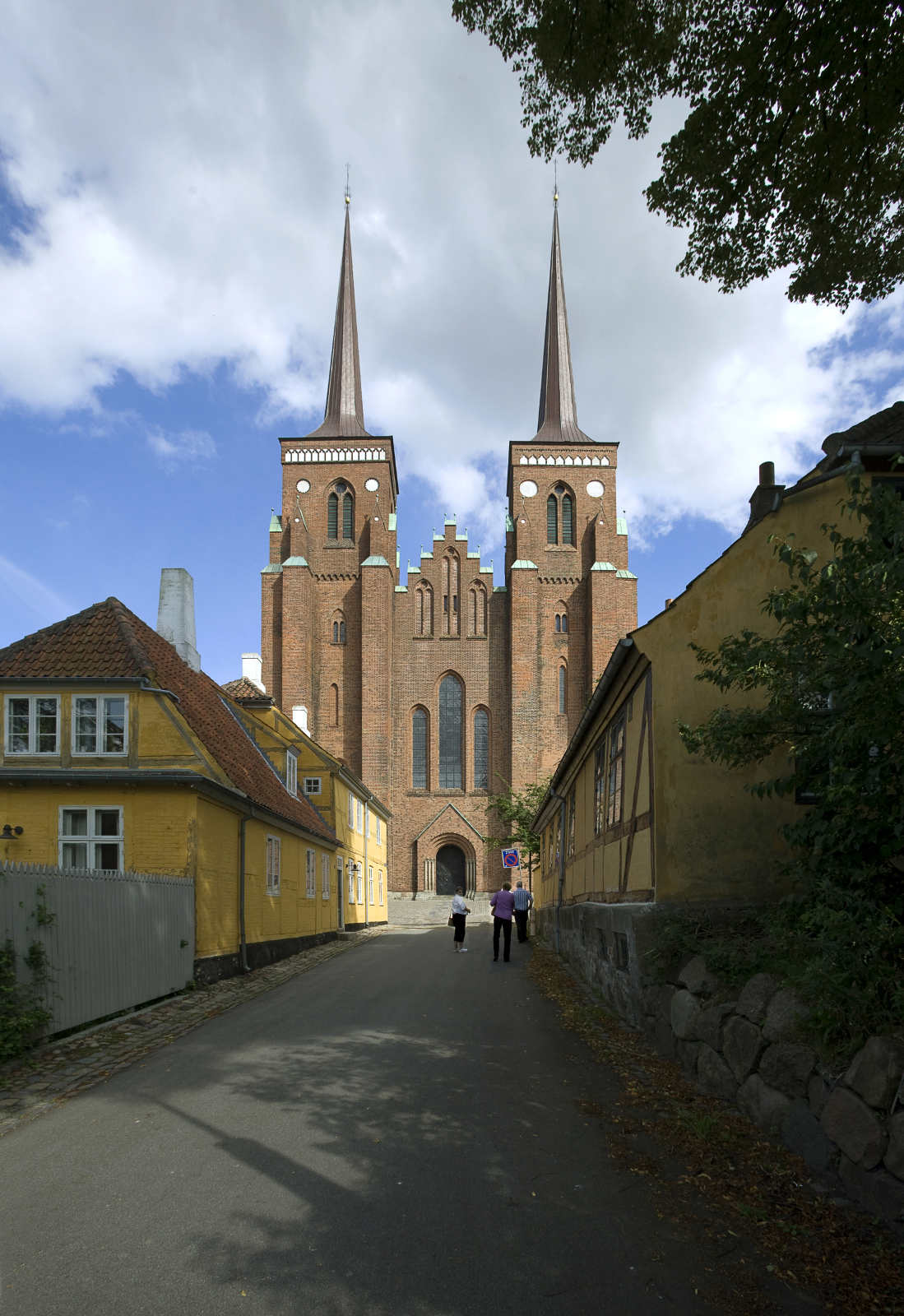
Roskilde Cathedral is the most important church in Denmark. Its richly decorated vaults and dark crypts hold 1000 years of Danish history. Since 1995 the cathedral has been a UNESCO World Heritage Site. With its many unique royal chapels, it reflects the changes in European architectural history over 800 years: Romanesque and Gothic features are represented as well as Renaissance, Baroque, Neoclassicism, Eclecticism and Functionalism. The magnificent red building consists of around 2.5 million bricks and is considered the oldest cathedral of the Brick Gothic style in the whole of Scandinavia. It is an example of the earliest Gothic reception in the early days of building with brick in Northern Europe. Note the four-storey design of the chancel elevation with a light gallery floor and blind triforium arches above, a design that was adopted from the early Gothic cathedrals of the crown lands of France.
With the tombs of 40 kings and queens, the entire history of Danish kings and queens may be found here in one place. Legend has it that Harald Bluetooth was laid to rest here, but there is no evidence of this. Among those buried in the cathedral are Queen Margrete I, who 600 years ago joined Denmark, Sweden and Norway in the Kalmar Union, as well as King Frederik IX, the father of today’s Queen Margrete II. Since the 16th century the cathedral has been the official burial place of the royal family and the funeral monument of the present queen has already been placed in the cathedral. A small exhibition explains the creation process of this monument and the tradition behind it.








